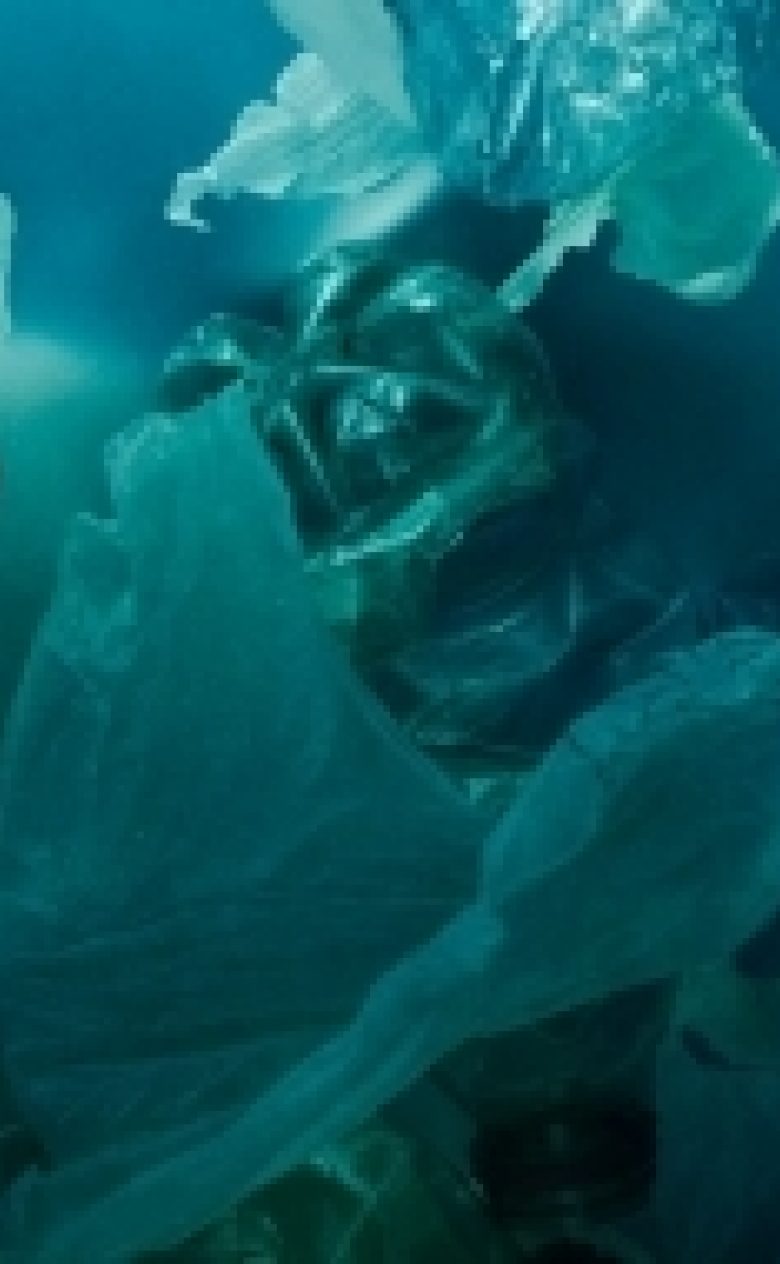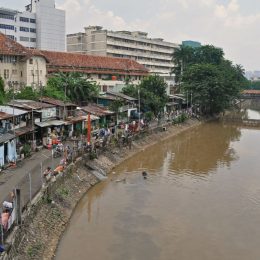Guidelines for effective plastic removal from rivers
Allseas asked Deltares to determine optimal locations in rivers for removing plastic litter. Where should a plastic capture device be located to be most effective in removing litter?

Plastic litter is a threat to ecosystems, especially to animals higher in the food chain. Plastic litter can fall apart into microplastics. Microplastics were found in the human body and may potentially be a health risk. Plastic production is still increasing and so the amount of mismanaged waste is likely to increase as well. Plastic litter wasted on land often ends up in waterways and rivers. With rivers being major pathways of plastic litter to the oceans and seas. Detecting and following plastic from source to sea is where Deltares knowledge already has been applied. Allseas obtained a data set from sampling campaigns in the ‘Nieuwe Maas’.
The Allseas Catchy systems; preventing plastic litter ends up in the sea
Allseas has decided to take an active stance in supporting the global effort to prevent plastic litter transport to our seas. Allseas’ approach is oriented towards the development of a cost-effective and sustainable system to remove plastic litter from rivers. Their systems Catchy and Catchy2 are currently installed in the ‘Nieuwe Maas’. Targeted are both large plastic items (macroplastic items) and small plastic items (microplastics) that are present within the water column. Plastic capture devices, like the two Catchy devices, remove most litter when they are installed at locations with both a relatively high litter concentration and a high flow velocity, meaning that the plastic litter flux is higher than in other parts of the river.

Modelling to predict the spatial distribution of plastic litter
To answer the question by Allseas, Deltares carried out a literature review. This showed that the general knowledge of the spatial distribution of plastic litter was limited. Two types of modelling were carried out to gain insight in the behaviour of 24 different types of plastic litter items, both making use of the flow field obtained from a 3D hydrodynamic model.
In addition, the software ‘D-particle tracking’ was used to simulate the transport of the larger types (macroplastics). This package resolves the sinking or rising of litter due to the difference between its density and the density of the water. The transport of the types smaller than 5 mm (microplastics) was simulated using the software D-water quality for microplastics transport).
General guidelines for optimal location selection
Typical processes controlling plastic transport for river reaches, as well as typical forcings and variables that indicate the type of river planform were listed. Since each river reach has a characteristic river planform types, forcing and interactions between them, the plastic transport and the resulting distribution is likely to be different from the distribution in another reach. There are many different forces and interactions present in each river, which influence the plastic transport.
From software verifications and 'Nieuwe Maas' model simulations, we concluded that in general the models are suitable to reflect the transport of plastic items and their distribution in a river reach. Important processes such as advection, wind drag and settling of a plastic item are included in the models and results were generally as expected. Trends in model results are qualitatively similar as trends in the 'Nieuwe Maas' observations. See also the research article, written by Elise Blondel, Allseas and Frans Buschman, Deltares.
Deltares was able to define general guidelines for optimal locations for collection of plastics from rivers. Number 1 holds for the larger scale: Optimal locations for plastic collection in rivers are within the tidal zone in a river, where both ebb and flood flow occur.
On the location within the cross section of a river, a general guideline was formulated for litter items that have the tendency to sink: The optimal location to collect plastic litter that sinks (e.g., PET drinking bottles filled with water) is somewhere in the deeper part of the cross section. As such, the system can best be designed to also collect items close to the bed.
Similarly, guidelines were formulated for plastic litter (e.g. bottle caps) that are rising (tend to float):
- A. During calm wind conditions, the optimal location to collect this litter is where the flow velocity is highest.
- B. During moderate and high wind conditions, wind plays a significant role. Accordingly, the flux of this type of litter may be much higher near the downwind riverbank.
These guidelines can be beneficial to install any plastic capture device that removes plastic litter from part of the cross section in any river or estuary.
This research project has been made possible by EU grant: LIFE17 ENV/NL/000339.




